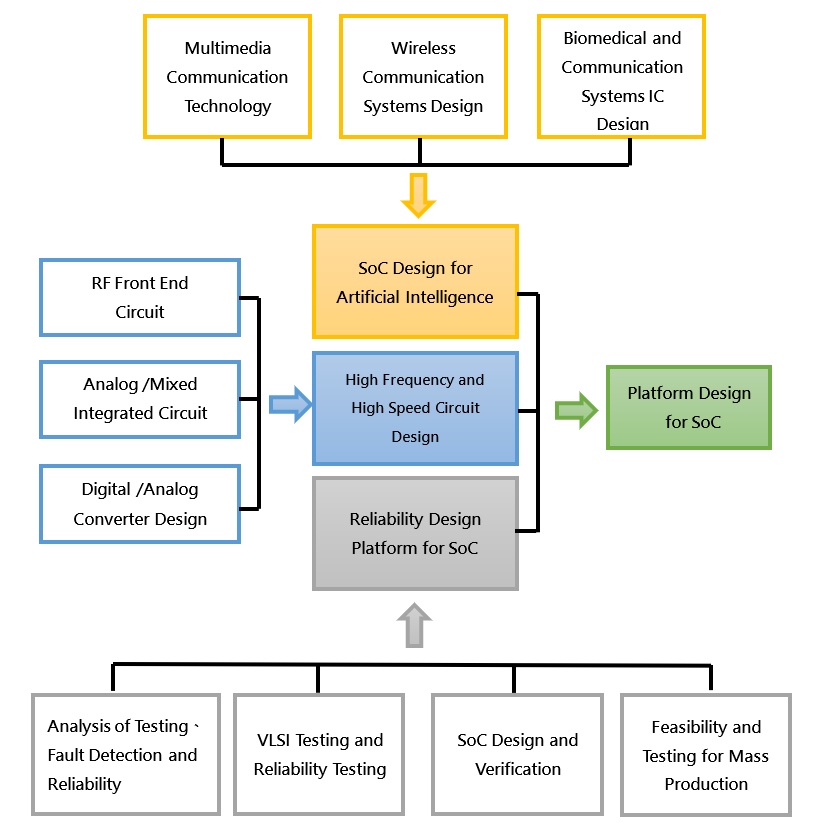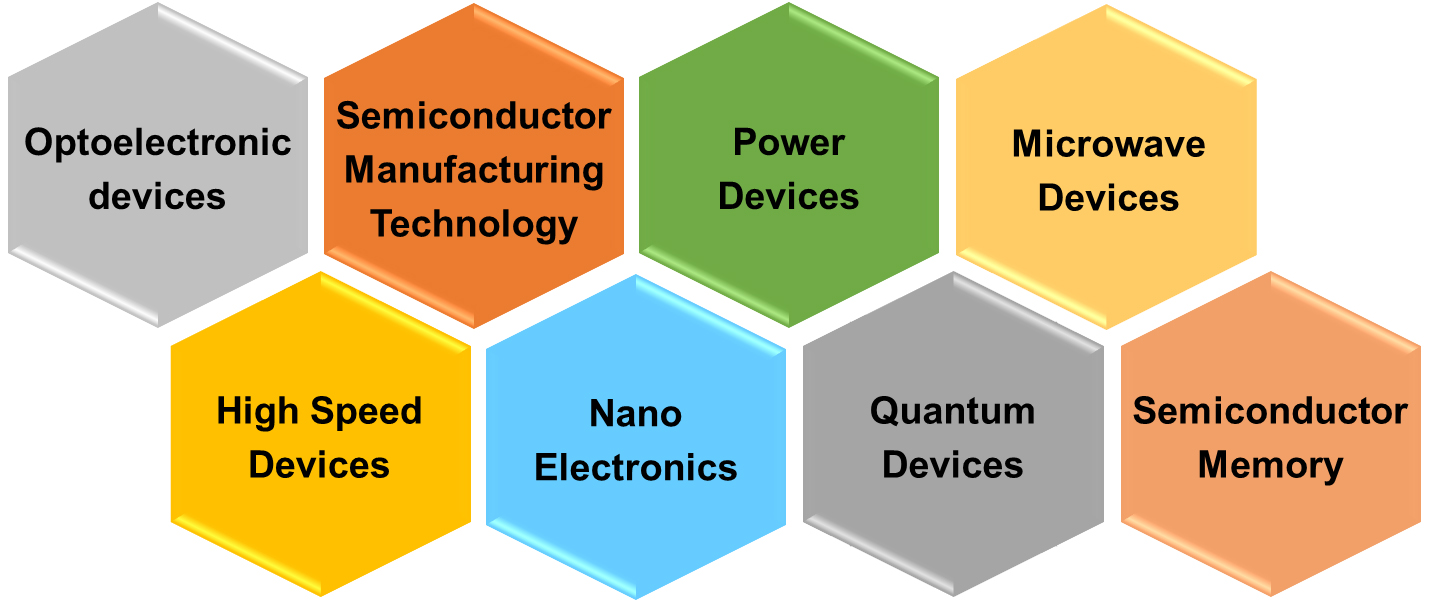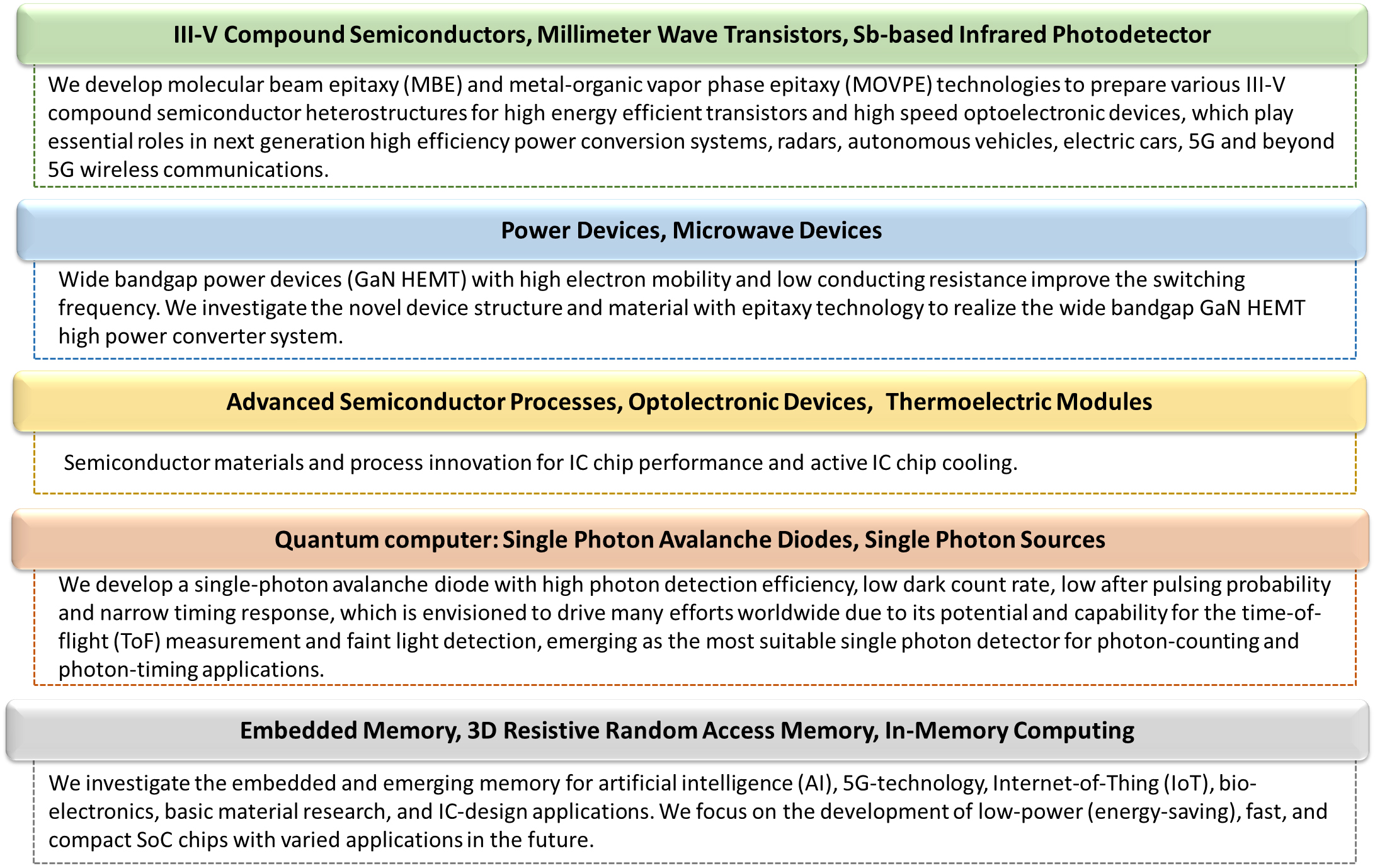Integrated Circuits and Systems Group
Research Emphasis
Design of Artificial Intelligence Electronic Systems、Design of VLSI Circuits and System、Computer-Aided Design for SOCs、Design of Mixed-Signal or High-Speed ICs、Design of Biomedical Electronic Circuits and Systems、Testing and Design Automation of VLSI Circuits and Systems.
Research Characteristics
The Integrated Circuits and Systems aims on the development of the following three core technologies:
- SoC Design for Artificial Intelligence Electronics
- High-frequency and High-speed Circuit design
- Reliability Design platform for SoC
The target of the first topic is to develop high performance multimedia chip systems, AI accelerator, and essential modules for advance wireless communication technology.
The target of the second topic focus on the advanced circuit and system design including the circuits and system architecture, design flow, and design methodology.
The target of the third topic is to establish high-yield-rate and high-reliability design automation platform. Design for testability and reliability, analog circuit design automation, and semiconductor memory design, test, diagnosis and repair are all included.
We aim to integrate the developed technologies of electronic circuits and systems and to provide the friendly environment for planning the distinct courses and labs, encouraging the joint research project and opening in line with the future needs of prospective courses.
The electronic group is responsible for teaching and research activities related with integrated circuits and systems, and can be cooperated with other groups, such as the solid state group for process- and circuit-related research, systems and biomedical group for signal processing and system applications, EM wave group for wireless communication systems.

Solid State Group
Research Emphasis
III-V compound semiconductor epitaxy, Sb-based infrared photodetectors, microwave and millimeter devices, power devices, quantum computers, single photon avalanche diodes, single photon sources, advanced semiconductor processes, optoelectronic devices, thermoelectric modules, embedded memory, 3D resistive random access-memory, quantum dots, vertical cavity surface emitting lasers, and high-speed photodiodes.
Research Characteristics

The research of Solid State Group includes solid state physics, semiconductor materials and manufacturing process, optoelectronic devices, power devices, microwave devices, high-speed devices, nano-electronics, quantum devices, and semiconductor memory etc. We collaborate with the Integrated Circuits & Systems Group, and System & Biomedical Engineering Group to conduct multidisciplinary research including the developments of materials, process, devices, circuits and systems. The functional devices and integrated circuits with low power consumption, energy efficiency, high speed, and small volume are developed for 5G/B5G wireless communication, quantum computer, efficient power conversion system, radar system, autonomous vehicles, AI (Artificial Intelligence), biomedical electronics, and IoT (Internet-of-Things) applications.

Intelligent Systems Group
Research Emphasis
Intelligent Control Theorem and Applications, AI Integration into Robots, Precision Control of Microscope System, Mechatronic System Design and Applications, Biomedical Engineering and High Technology Devices, Speech/Image/Language Processing, Power Electronics and Motor Control Applications, Artificial Intelligence Techniques, Wearable Devices, Smart Grid, Microgrid, Energy Information and Communication Technology.
Research Characteristics
The research areas of our group can be divided into three fields, including control field, power field and biomedical field. Details are respectively introduced as follows.
The main developments in the control field are the establishment of automatic control system theory and engineering applications, precision control of microscope systems, and the combination of artificial intelligence and robotics. The research of robots necessarily involves computer vision, so image processing and computer vision are also one of the indispensable research directions in this field. At present, the field is implementing a MOST four-year, one thousand UTD per year AI project. It is a blind guide robot and a blind guide wearable device. In addition, in the area of system precision control, the research field is also continuing to develop, such as laser confocal microscope systems, atomic force microscope systems, industrial robot arm systems, etc. Relevant professors are actively fighting for projects in the Ministry of Science and Technology and industry-academia cooperation projects, and often participate in large-scale domestic special competitions and have repeatedly achieved good results.
Since the energy saving and carbon reduction have become the important international and domestic development goals in recent years, the power field in this group combines fundamental knowledge of power system, power electronics, control theory, and motor control to develop advanced technologies for the high-quality and efficient smart grid. It covers many development aspects such as renewable energy, energy storage, microgrid, power converter, intelligent control, energy information and communication, power quality, electric vehicles, wireless power transmission, and so on. To cope with this development trend, teachers in the power field integrate their respective research expertise and plan to integrate and manage smart grid systems. The goal is to apply innovative power conversion architecture and intelligent control strategies to regulate diverse energy sources, stabilize power supply, decentralized centralized systems, and enhance energy efficiency. In addition, they are also devoted to train participating researchers and students to become the important professionals in the integration of energy systems.
The researches of biomedical engineering aspects aim to develop novel medical devices and diagnosis technologies to provide communication/mobility assistive and intelligent decision making in clinical applications. Our research feature combines signal processing, medical processing, control theory, power electronics, artificial intelligence, and knowledge of biomedical engineering, and collects large amount of biomedical data to decode biomedical information in clinics, in order to provide intelligent medical aid and diagnosis assistive systems, in response to the awareness of high quality life and the changes of aging society.
Electromagnetic Waves Group
Research Emphasis
- Wireless Communication System and Microwave Engineering
- High speed analog/mixed signal/RF/Microwave/mm-wave integrated circuit designs
- Microwave filter/Antenna/ Integrated Passive Devices/System Level Package Technologies
- Applications of Ferroelectricity material in microwave circuits and RF tunable circuits
- Radar Signal Processing and Target Recognition
Research Characteristics
The Electromagnetic-Wave Group mainly focuses the design of high-frequency material, circuits and antennas, especially implemented in the form of RFIC and MMIC, for wireless communication and radar applications. The frequency bands of interest range from radio frequency to millimeter-wave regime. System-level research features AI signal processing and target recognition of polarimetric Doppler radars.